Teenage Engineering POM-400
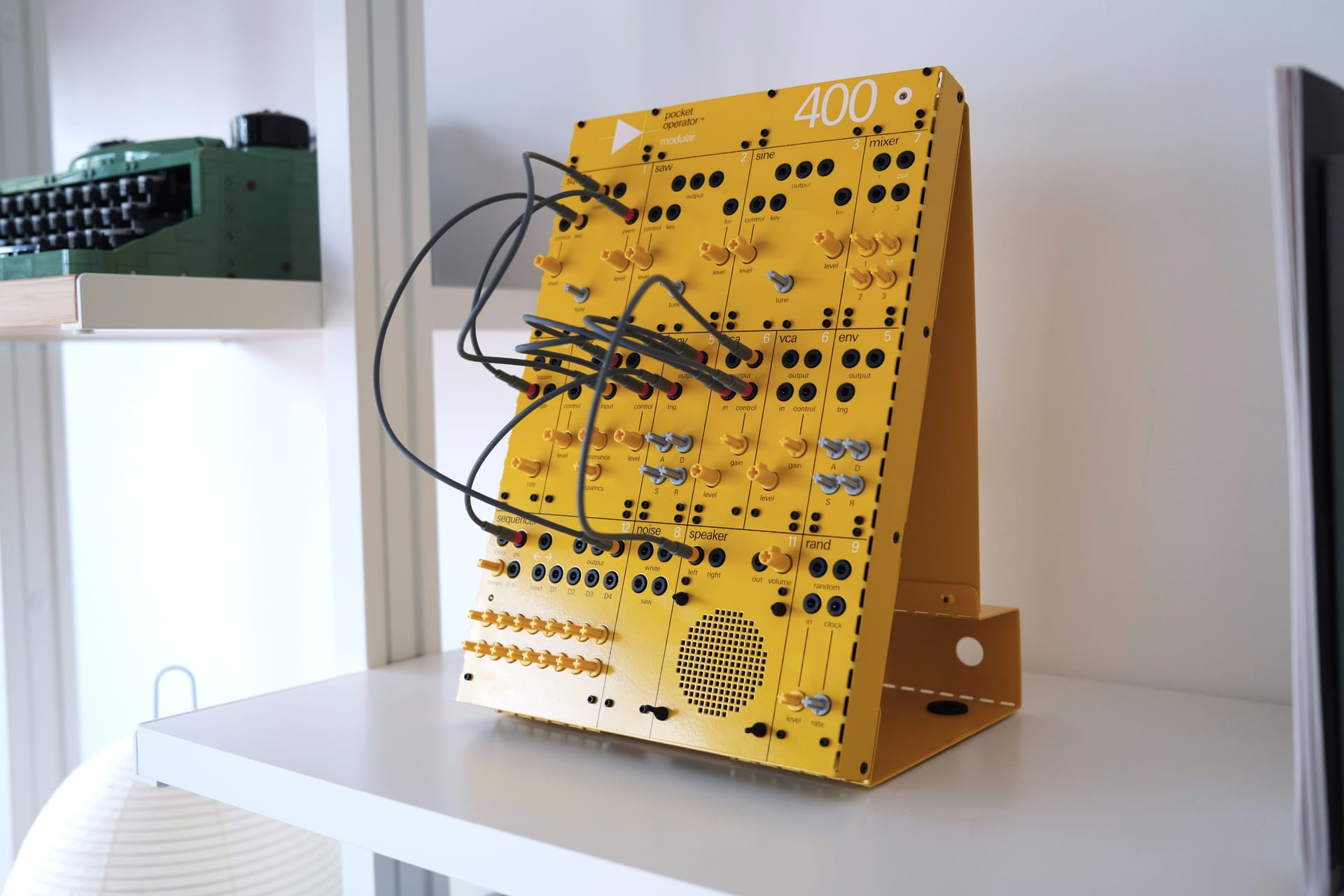
Teenage Engineering is one of my favorite brands because it combines two things I love. Design and attention to detail. They make Musical instruments or speakers and many other things. All their products are a joy to use. They also look beautiful, and it's not a mash of various plastics, displays, or knobs. Their design is minimalistic and coherent.
Over the past months, I've purchased many of their products, and the latest one is the POM-400 Synthesizer.
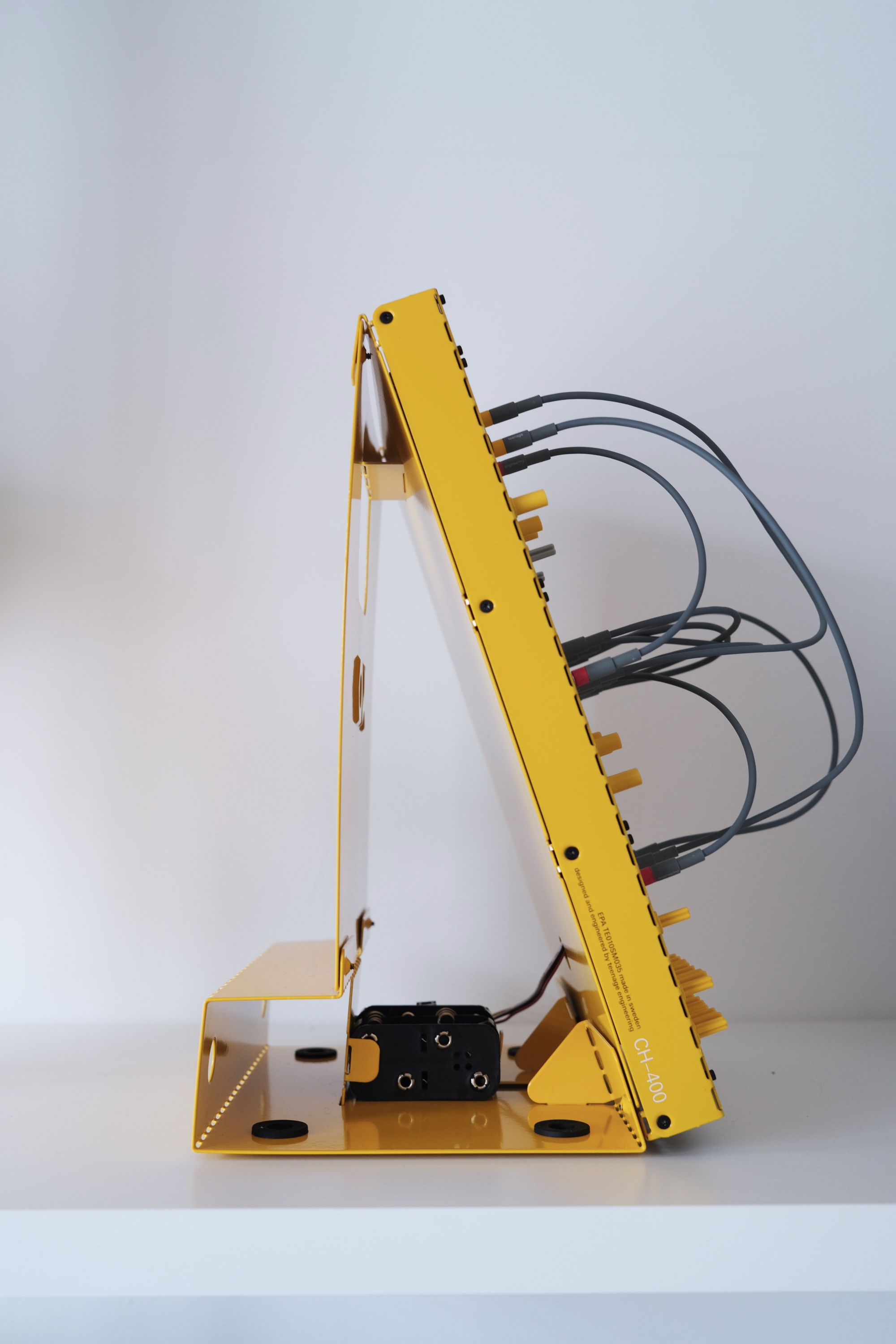
What is a Synthesizer
The POM-400 is an Analog Synthesizer. A Synthesizer (or just called a Synth sometimes) is an electronic musical instrument that generates audio signals. The Wikipedia page explains the essence nicely:
Synthesizers typically create sounds by generating waveforms through methods including subtractive synthesis, additive synthesis and frequency modulation synthesis. These sounds may be altered by components such as filters, which cut or boost frequencies; envelopes, which control articulation, or how notes begin and end; and low-frequency oscillators, which modulate parameters such as pitch, volume, or filter characteristics affecting timbre. Synthesizers are typically played with keyboards or controlled by sequencers, software or other instruments, and may be synchronized to other equipment via MIDI.
The POM-400 is an Analog Synth. The soundwaves are generated analogously, using various circuit boards to create the waveforms. The POM-400, for example, has three Oscillators and can create Sine, Square, and Saw waveforms. Teenage Engineering also sells digital synthesizers, and their popular OP-1 is a digital synthesizer. Digital means that the waveforms and various filters are implemented digitally via Software.
An Analog Synth is a different beast. There is no software, and you are operating various knobs manually to tweak a waveform's frequency, amplitude, or phase shift.

These machines are called synthesizers because we generate audio through various forms of analog synthesis. There are many ways to generate audio, and the POM-400 is a "Subtractive Synthesis". This means that oscillators generate waveforms, and then we shape them with filters to remove or boost specific frequencies.
The POM-400 has 16 different modules and various filters to shape the audio. One of the reasons I got the POM-400 was because I wanted to learn more about the workings of a Synth, and the POM-400 is nicely packaged into a single unit with all the basic synth modules you need to know.
Assembling the Synth
The POM-400 kit comes in an oversized yellow package. As with all Teenage Engineering products, you can feel how nicely the packaging is designed. What's different, though, is you assemble everything yourself, and it's a Lego set for grown-ups.

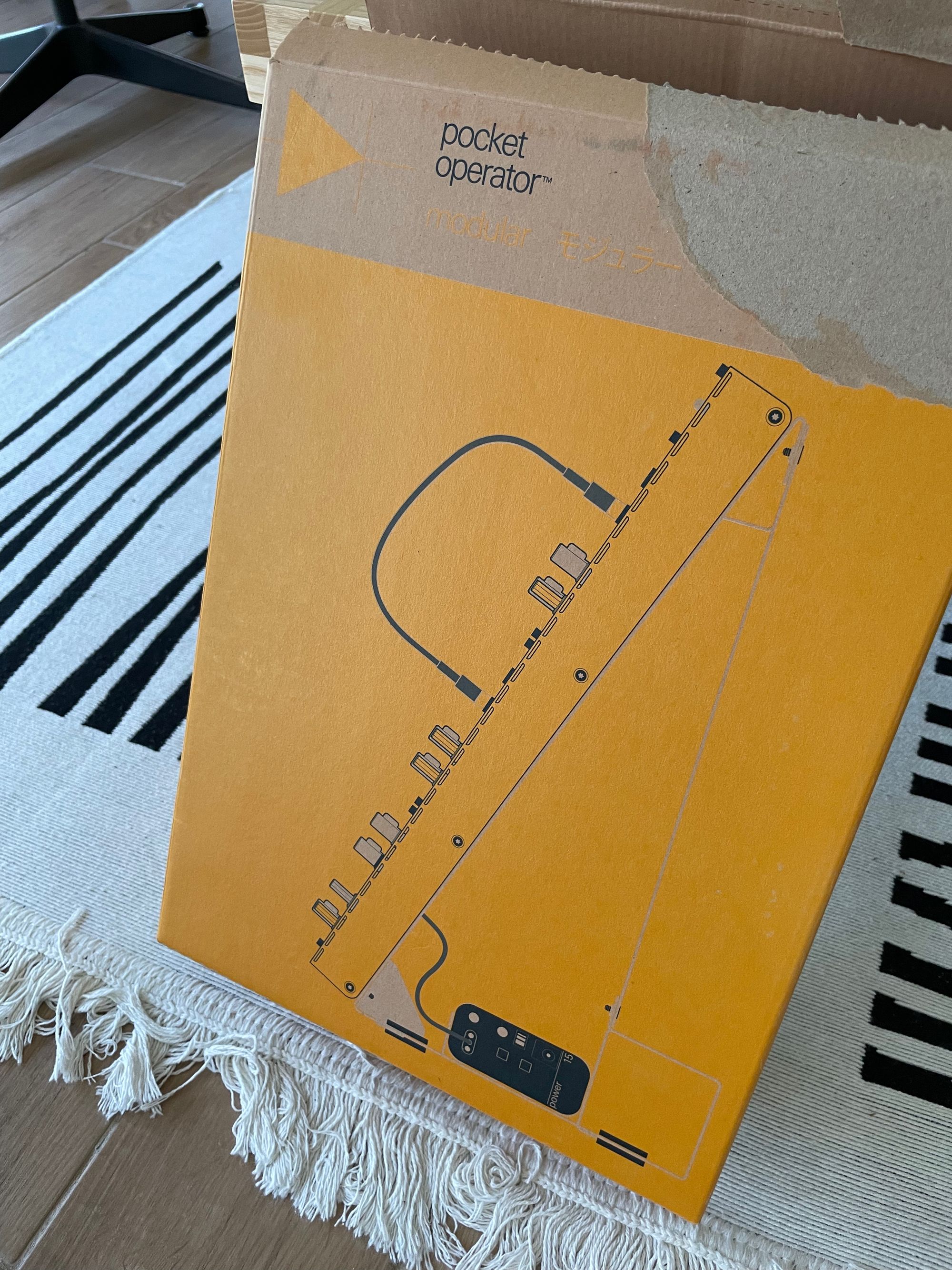
Inside the package comes many small other packages, With all the parts needed to build the project. You build the chassis by bending the powder-coated aluminum metal sheets. Once finished, you mount the various modulators to the chassis, such as oscillators, filters, mixers, envelopes, etc.
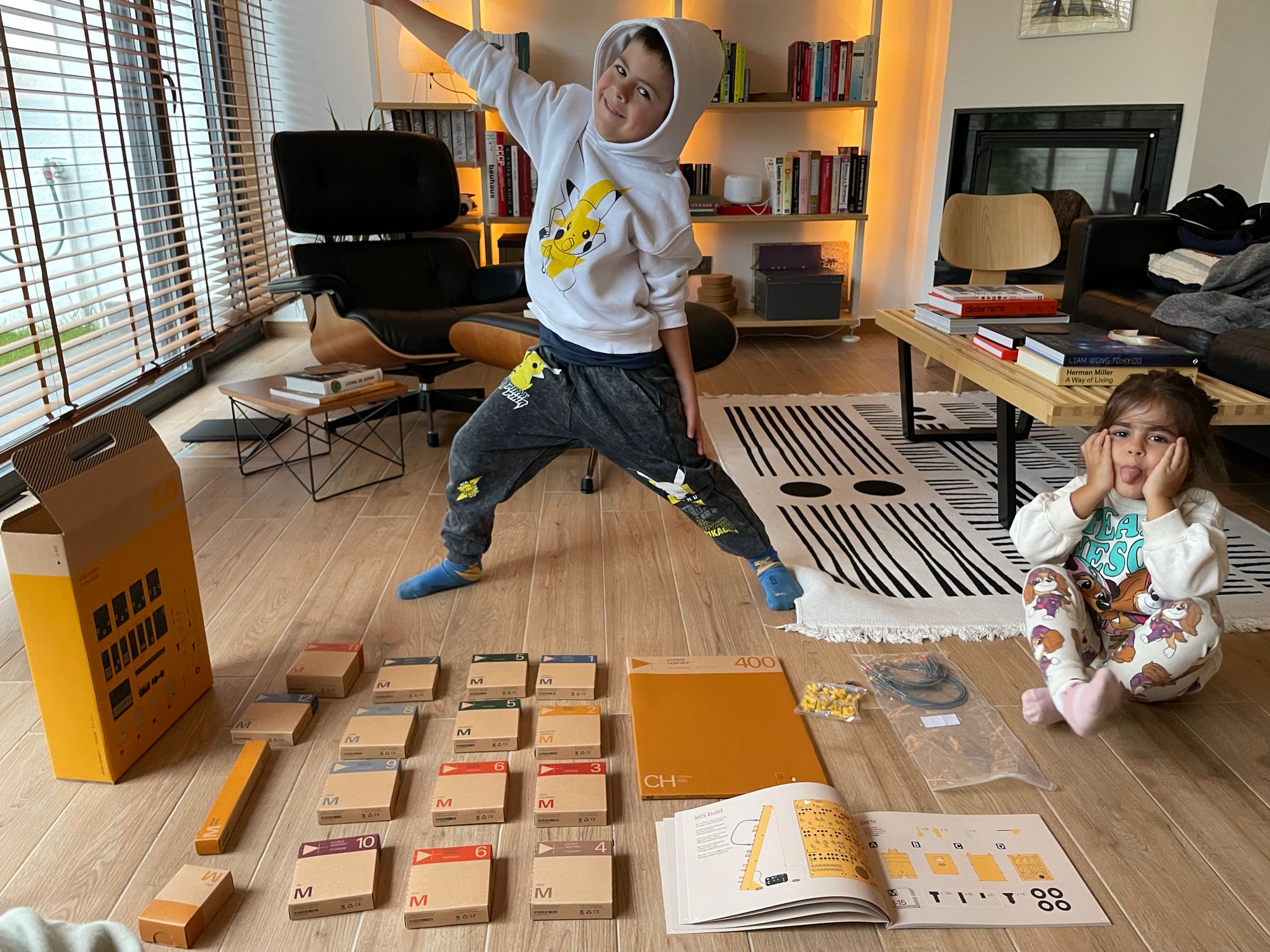


It took around 2 hours to build the kit.
The building process wasn't easy. I wish it wouldn't use tiny Torx screws because it was difficult to attach the small screws to the chassis and screw them tightly. In some parts of the Guide, the instructions were also missing (such as connecting the final cables to the PSU). I think Teenage Engineering could improve the building progress by watching some people and taking notes of their experiences.
Once finished, you power the POM-400 with 8xAAA batteries. However, there is an option to power the unit with wall power using an adapter, and TE sells a compatible adapter, which I've also bought for convenience reasons.
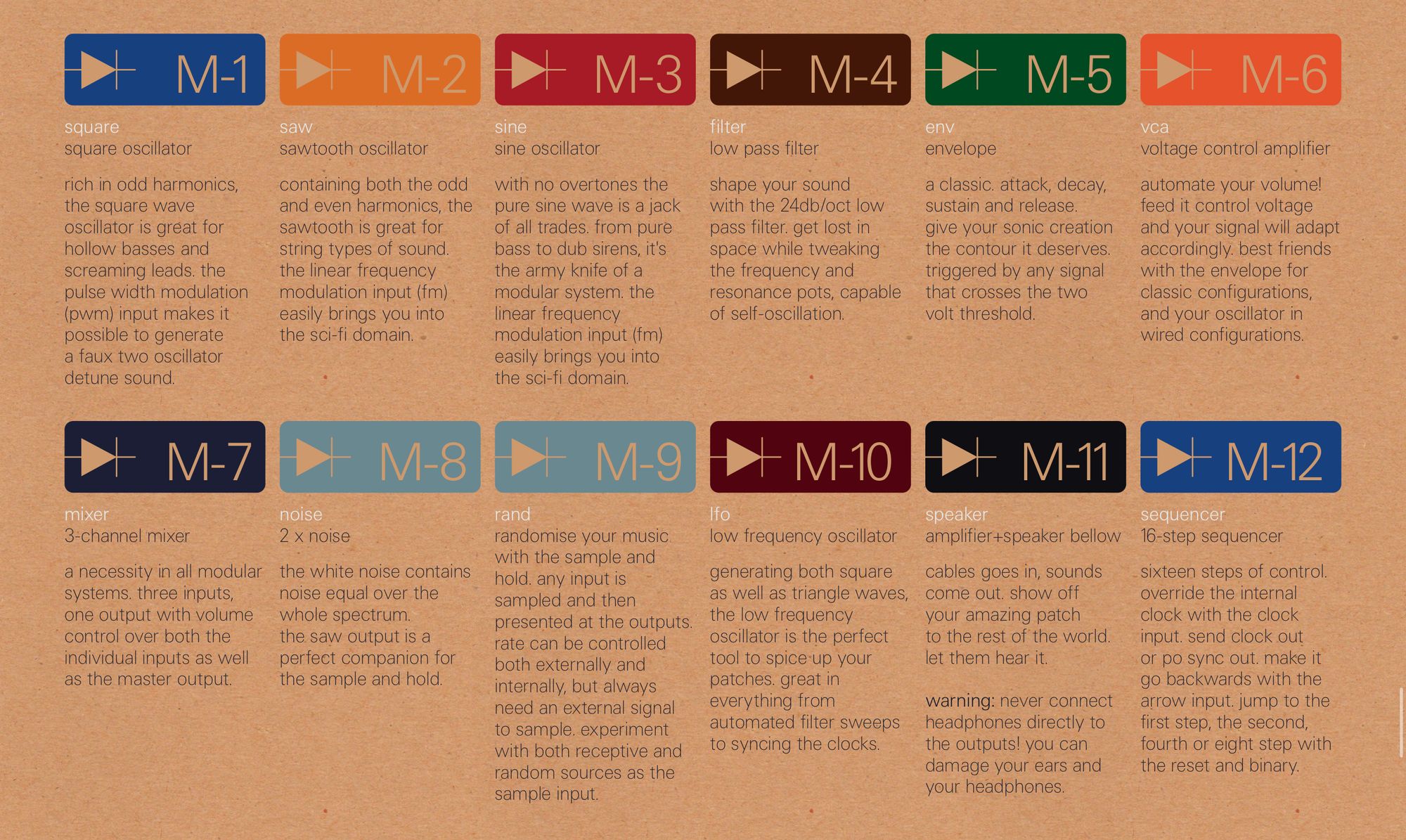
But one of the big reasons why these are called Pocket Operator Modular is that they are truly portable. The POM-400, for example, has a convenient carry handle, so it's easy to transport it between your favorite places. It's also called modular because the Synthesizer modules are separate circuits you need to connect, also called patching. More on this later.
Manual
The POM-400 also comes with a colorful guide to assemble the Synthesizer. What is nice about the Guide is that it also comes with example patches to test out your Build immediately.

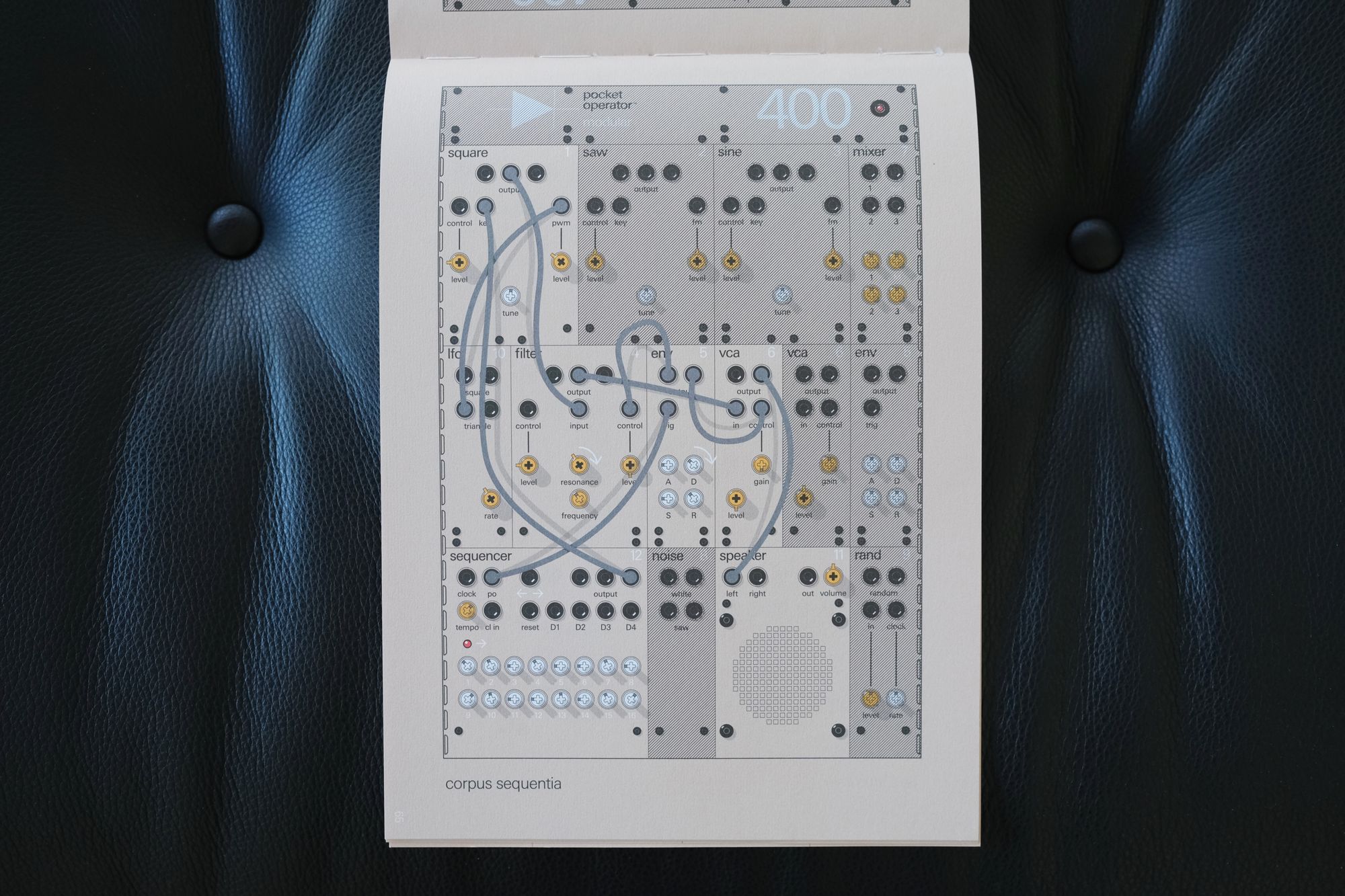
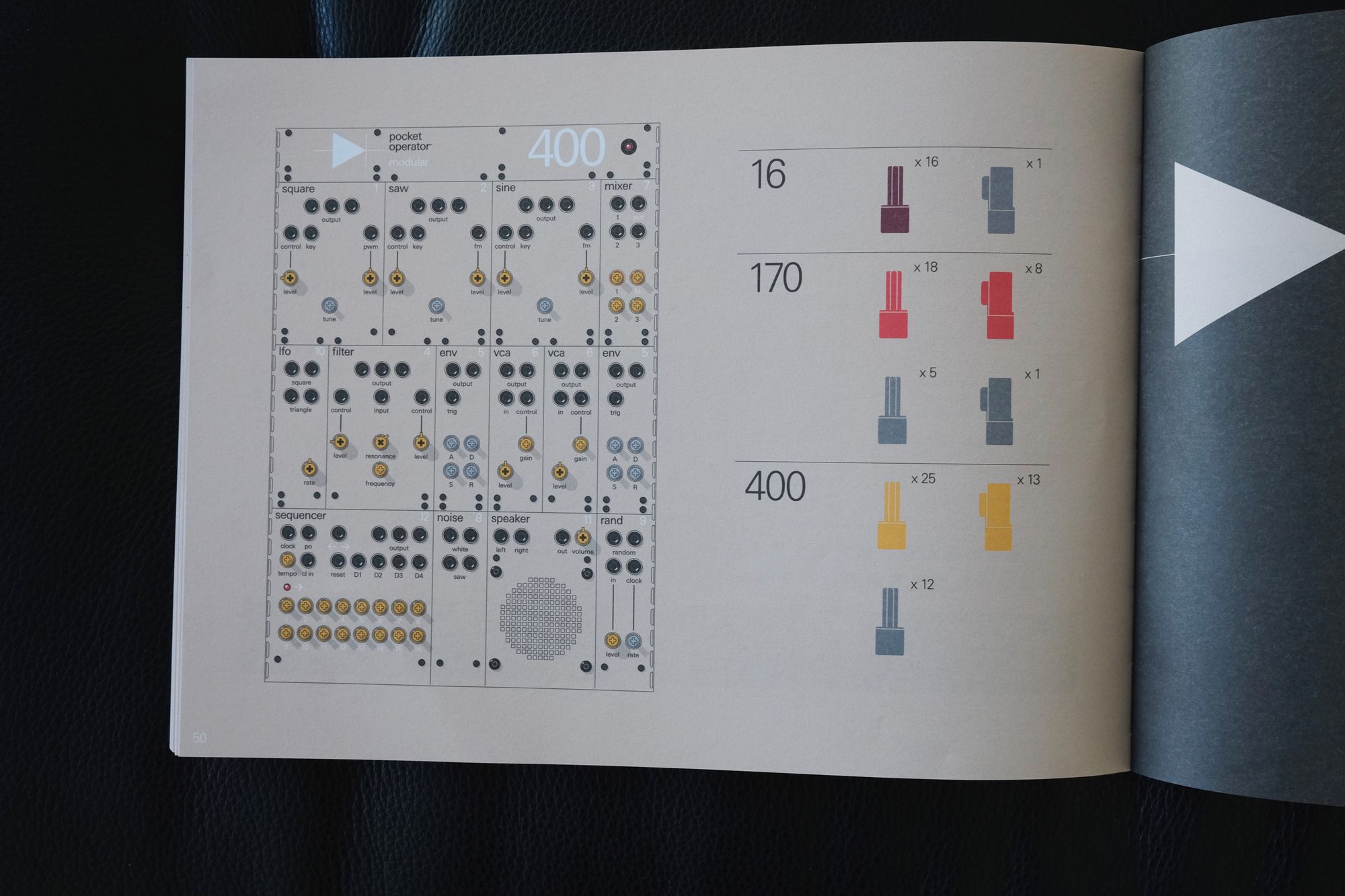
This particular example is also one of the strengths of this Analog Synth. You have a 1:1 mapping of a model that you can touch and feel. It's been a long time since I've seen such an example where the hardware blurs nicely with a guide.
Patching
I've said patching before, but what exactly is patching? As I've explained earlier, in the beginning, the POM-400 is a Subtractive Synthesis engine, and we're generating audio and shaping it with various analog filters and components.

Patching means connecting these modules with 3.5mm TRS cables, a.k.a; patch cords. There are many advanced synthesizers (and digital ones) that cables are not needed anymore. But the joy of using a POM-400 comes precisely from this difference. The ability to create a "patch" by connecting various oscillators, envelopes, and filters is very different compared to using a digital synth.
Let me show an example patch.
Teenage Engineering provides ready-to-use clean sheets you can use to annotate your patches. I used Apple Keynote to draw each connection on this sheet and marked each output with numbers so you can easily follow the patch.
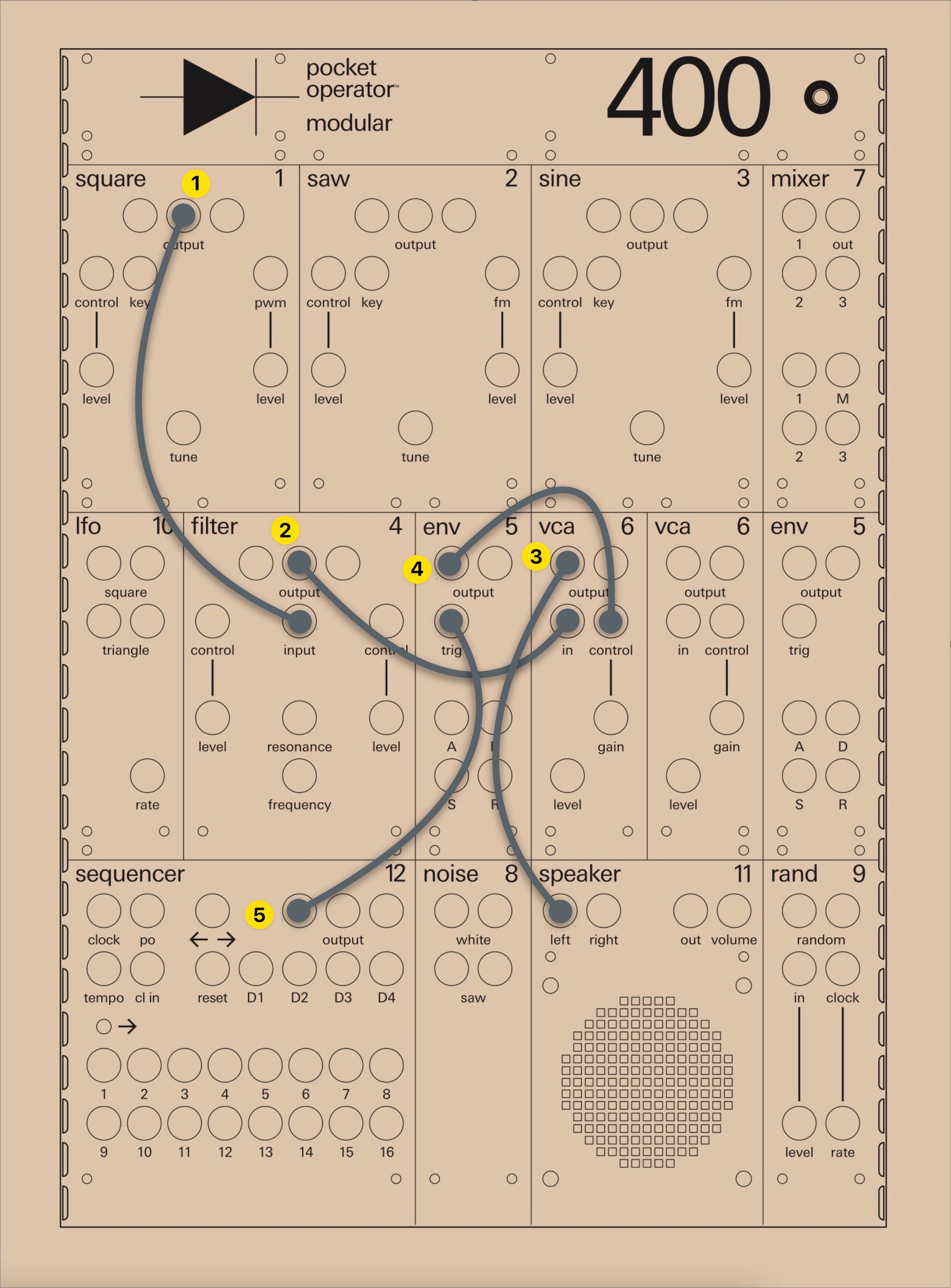
- We use the square oscillator module to create a square waveform and connect it to the input of a filter. We open the filter by turning the frequency knob all the way to the right. The filter is a low-pass filter, which allows us to shape the signal by filtering out high frequencies. The frequency knob controls the main cutoff frequency. If we turn it down, it'll only let low frequencies, and the human ear might not hear anything.
- The filter output is connected to the input of the vca, short for Voltage-Controller-Amplifier. The vca module modulates the signal's amplitude, such as changing the volume of a sound.
- Then we connect the output of the vca to the left speaker input. This patch is needed to listen to the generated final audio. However, let's also add more changes to the audio because otherwise, all we'll hear is a constant note from the Square Oscillator + filter. For that, we use the envelope and sequencer combo.
- Now we connect the envelope output to the control input on the VCA. The control input allows us to control the volume of the sound whenever the envelope is triggered. The envelope creates a new audio source that shapes the sound over time using the four knobs, ADSR, also called Attack, Decay, Sustain and Release. It's a widespread building block in Synthesizers. For example, when struck and held, a piano key creates a near-immediate initial sound, gradually decreasing in volume to zero. So it decreases with time.
- To trigger the envelope, we create a sequencer and then connect the output to the envelope's trigger. That way, the sequence output triggers the envelope at each sequence step.
And this is what the finished patch should look like with cables.

The finished patch
Here is a video of the finished patch in action:
I still have a long way to go to understand how to use a Synthesizer and combine the various modules to create exciting patches. However, I like how the POM-400 packs everything into a small package.
After buying the POM-400, I've also discovered more professional synthesizers that might be a better fit for beginners (such as the ones from Moog or Behringer). The POM-400 looks fantastic, though, and it's an excellent conversation starter. You can showcase it to your friends and put it back on your shelves, and that's one of the aspects I love about it.
However, it's finicky, and I can't say it'll stay with me for years because the quality is not like the OP-1 Field, and it feels like a toy rather than a professional musical instrument. But that's also one of the main selling points of Teenage Engineering. They make gadgets you want to play with and have fun with. And the POM-400 exceeds and meets my expectations.